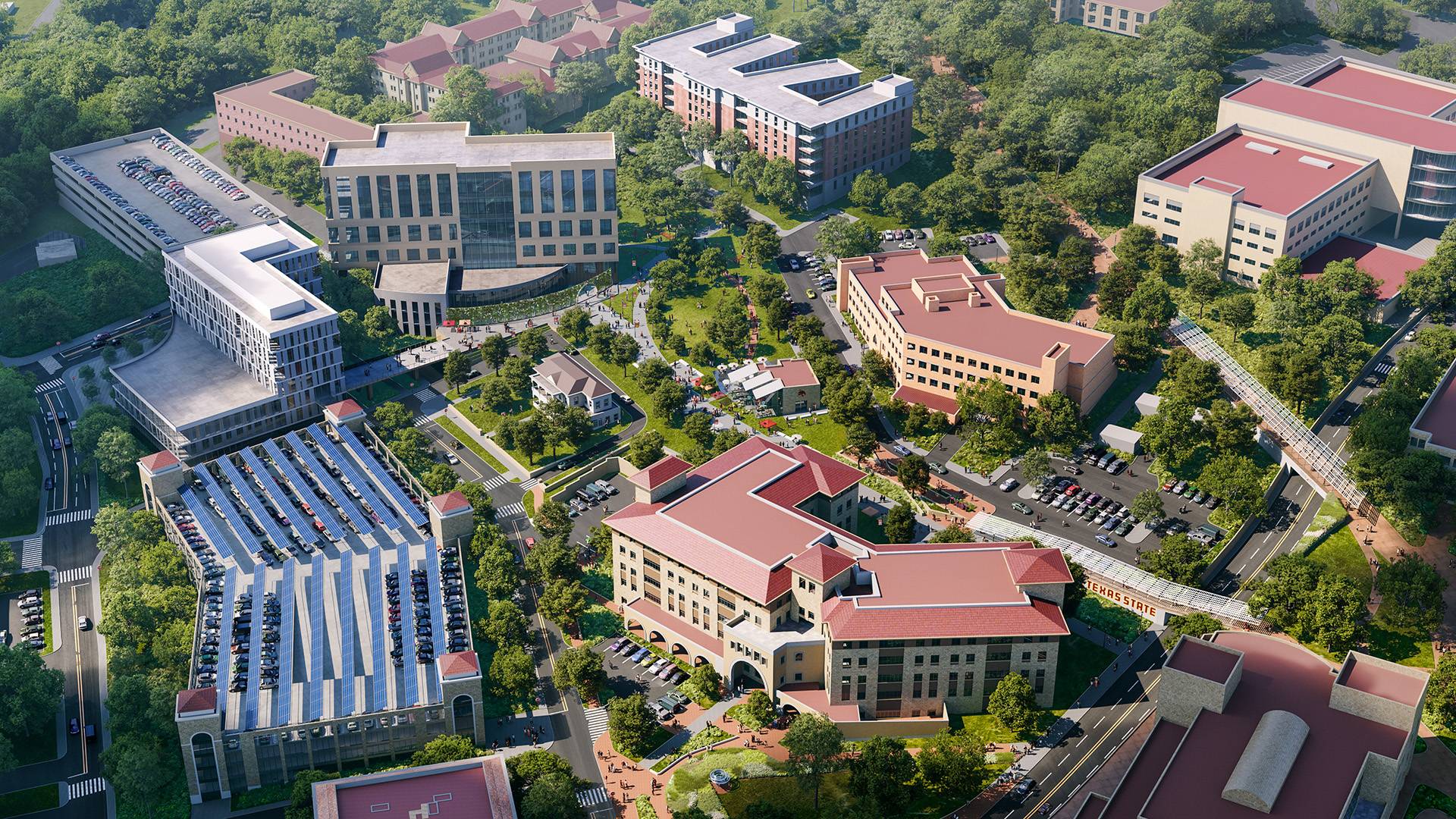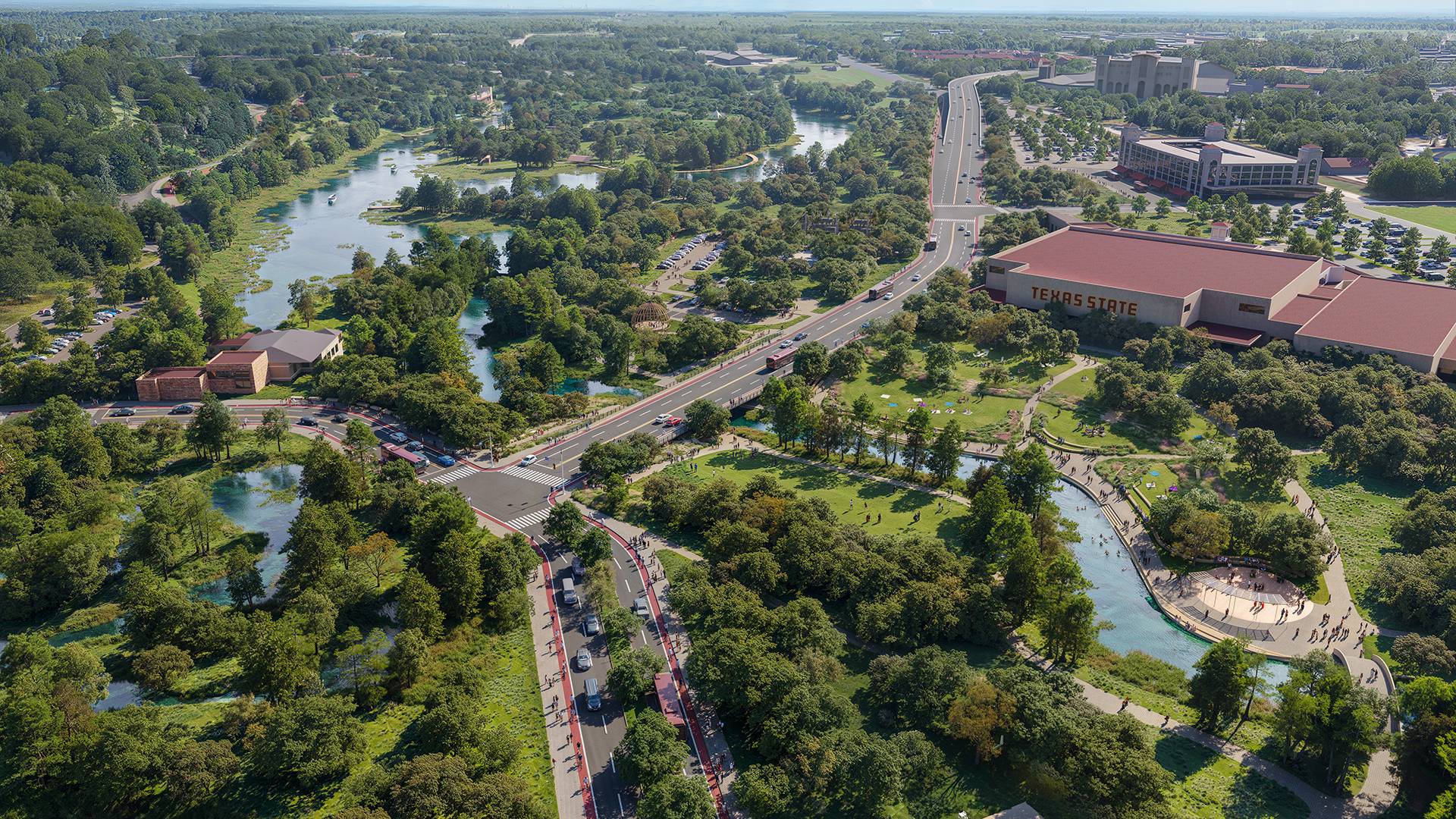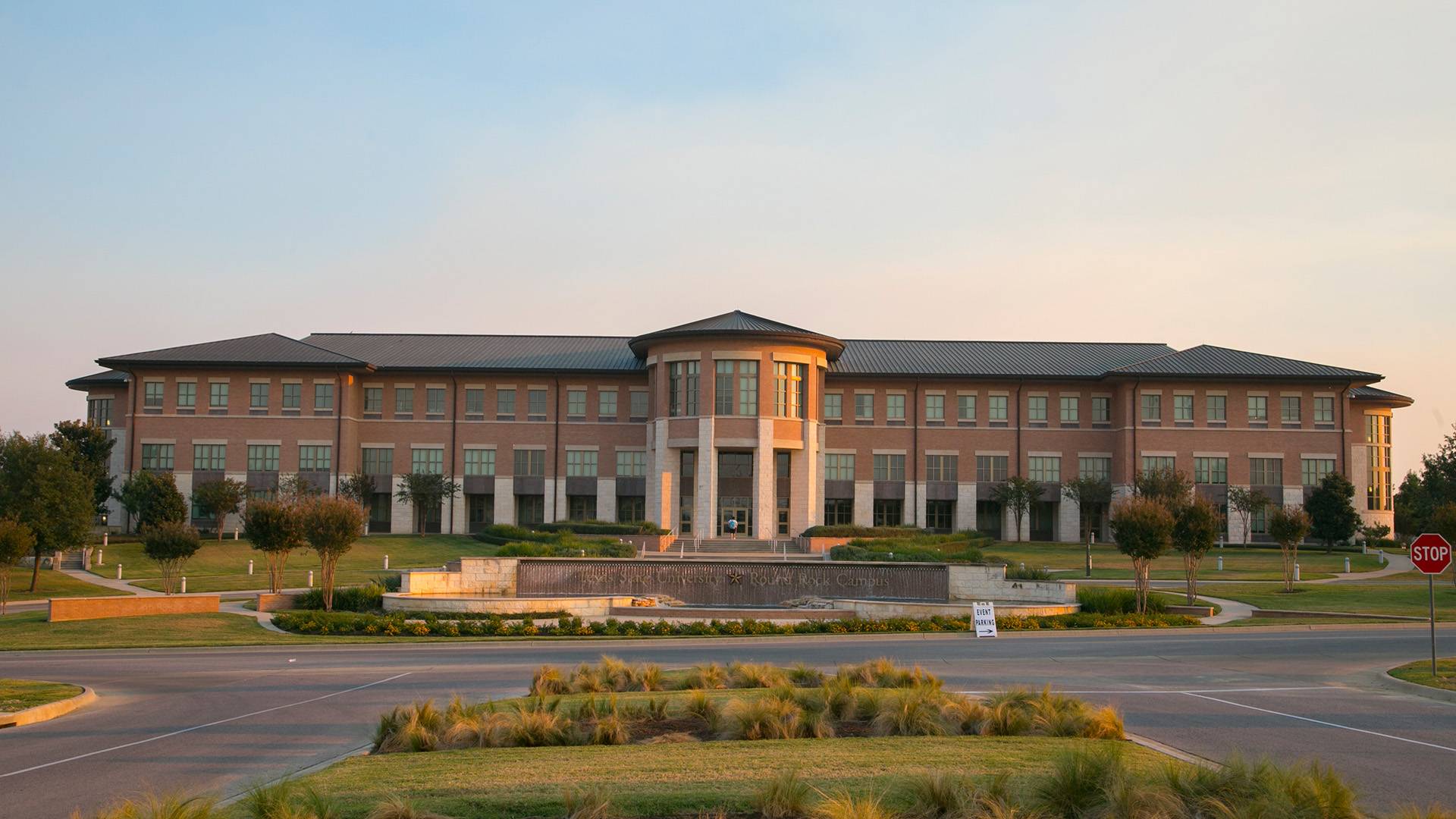The Texas State University System Board of Regents approved a new Master Plan for Texas State University during its quarterly meeting May 1 in San Marcos that will guide development, growth and renewal through the year 2035.
The goal of the Master Plan, prepared by the firm Page/ of Austin, is to chart a course to cement TXST’s place as one of the most beautiful college campuses in America. It was developed over the course of 18 months, based on scores of meetings and feedback from more than 5,000 students, faculty, staff and community members.
The plan encompasses the main San Marcos Campus as well as the Round Rock Campus and five other university properties. This blueprint for the future identifies projects over the next 10 years that will support the university’s projected growth to more than 50,000 students by 2033. The plan’s key themes include Student Success & Experience; Academic Excellence; Discovery & Research; Community & Connectivity; and Stewardship of Resources.


